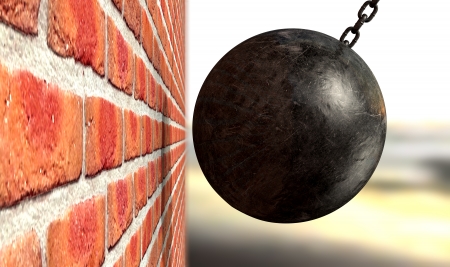Beekeeper Saves Bees in House Set for Demolition
October 19, 2017
Inside a vacant house set for demolition in Edgartown, Massachusetts, one of the first things people could hear upon entering the abandoned residence was the sound of a faint hum, despite the lack of running electronics in the building. This is according to Geoff Gibson, who owns Gibson Landscaping—the company hired to demolish the house. If the dozens of stunned or dead bees littered on the plywood flooring weren’t any indication, Gibson soon discovered there was a huge hive hidden within the walls of the old house.
“At first, I thought they were wasps,” Gibson said. “I knew there were a lot of them.” Once he saw they were only honeybees, Gibson hoped to spare them his wrecking ball. “[Honeybees] are having a hard-enough time as it is, and I didn’t want to add to it. I was glad James was willing to do it.” James Kozak, a veteran beekeeper and honey proprietor, was more than willing to jump into this extraction project. “This is a rare opportunity when you can extract a hive intact,” Kozak said.
Kozak, who personally has roughly 30 active hives, could not believe what he saw upon removing both the plywood and siding to reveal the six-foot-tall, six-inch thick hive within a wall on the second floor, which weighed up to 300 pounds. Most hives consist of roughly 40,000 or 50,000 honeybees, but Kozak estimated that this super-hive housed over 100,000 Carniolan honeybees. Over the course of several days, Kozak worked carefully to uncover the hive within the walls, fashioning a screening over it and constructing a system of pulleys and ropes for lowering the giant hive safely to the ground outside.
While bees swarmed all around him, Kozak used smoke to try and calm them, which apparently triggers bees to ready for forest fires and hide within the hive. He did all this while standing on a perch that was 20 feet above ground, with his employee, June Smith, providing support below. From beginning to end, the final stage in the extraction process lasted around 90 minutes and involved about half a dozen stings. Eventually, Kozak was able to guide the enormous hive down to the floor outside and lay it down, despite the hundreds of honeybees flying around.
Even with the care taken, the bees clearly were agitated by the ride down on Kozak’s makeshift pulley system. As the veteran beekeeper put it, “They [were] flying out of the hive like fighter jets off an aircraft carrier.” Rather than remove the hive while its residents were frantic, Kozak decided to wait several days to let them calm down and then come in again, either before sunrise or after sunset, to move them. From there, the bees will most likely be moved to a local farm or near a private home that will benefit from the bees’ pollination efforts.
Copyright: albund / 123RF Stock Photo


.jpg)



